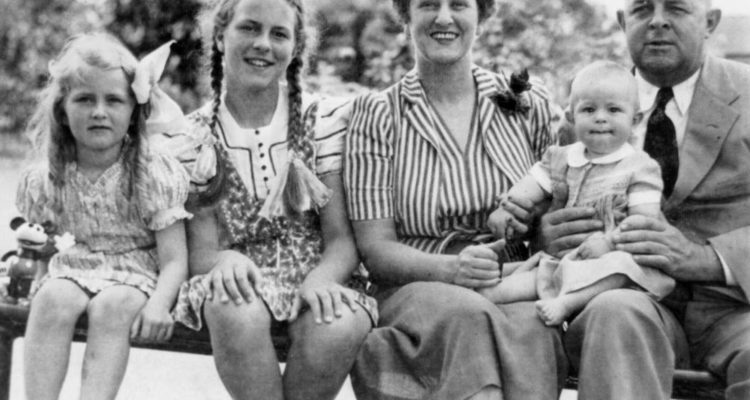As a youth worker in the early ’90s, the bulk of ministry was teen-centric. Ski trip, fall retreat, pool party, Friday night football, summer camp, mission trip, Wednesday night big group, youth Sunday School and Sunday night small groups were all part of a programming onslaught that would put Las Vegas to shame. The more students we could attract, the more potential adults we could reach with the goal of assimilating them into Sunday morning worship, and eventually have them become stakeholders in the life of the church.
This actually was the kind of language used in our staff meetings; as a young intern, I was eager to please because it made sense to me that “a healthy church is a growing church” (another staff meeting maxim).
The longer I worked with teens, I began to notice that the stakeholders (parents of teenagers) were adult human beings who were facing life head-on and doing the best they could despite some very difficult situations. When I stopped being scared of parents and started talking to them more, I noticed a correlation between troubled parents and troubled kids. I started to resonate with more and more youth workers who were talking about family-based youth ministry, and I knew I never could go back to the way things had been before. My desire to give real support to whole families eventually led me to go back to school and pursue training as a marriage and family therapist.
In my hometown of Kansas City, I have the privilege of speaking frequently with youth workers whose awareness of the significance of ministering to the whole family seems to be alive and well. They have had better training than I did when I was starting, and many of them want to deepen their understanding of the nuances of how families work function and dysfunctionally. I usually start by telling them a little bit about a guy named Murray Bowen who did some ground-breaking work on family systems in the 1950s. Bowen was the first psychiatrist who began to view psychological dysfunction as the result of unhealthy, anxious patterns that were taking place in family relationships. His views were not popular at first, but his work, research and dedication set the cornerstone for what would become the modern field of marriage and family therapy. You certainly don’t have to be in a mental health profession to apply these concepts. Youth workers have different boundaries and different expertise, but when youth workers apply good research and fresh knowledge in their ministries, and if they pay close attention to the undercurrents in a family, some really exciting things begin to happen.
While there are many good resources that can help increase our understanding of how families work and what they need , Bowen is a great place to start. Excellent research tends to reveal the world God has made for us in all of its beauty and complexity no matter who is looking through the microscope. Here are eight concepts that I have boiled down from Bowen’s work, Family Therapy in Clinical Practice that I hope will help you as you love the families God has placed in your care.
1. Differentiation of Self
This might sound complicated, but here’s the meaning: A person’s level of differentiation refers to the degree to which a person can think and act for him or herself while being in contact with emotionally charged situations. It also has to do with how well a person understands his or her own thoughts and feelings, as well as how skilled he or she is at interpreting the thoughts and feelings of others. We could think of teenagers usually having lower levels of because their primary struggle as adolescents is to figure out who they are, who they are not, and exercise their growing independence. This takes time. Why do teens respond so powerfully to mission trips? Because mission trips and other service projects raise their levels of differentiation by affirming the teen’s talents and gifts, and then by giving them ways to look outside themselves and respond to the world around them.
Start by asking yourself, “How do the offerings of my youth ministry provide avenues for teens, families and volunteers to grow in their knowledge of who they are, and how they perceive others and the world around them?” Our ultimate model for differentiation of self is Jesus. Remember this account:
Jesus deeply understood who He was. So in the midst of the squall, He remained calm and exercised His authority to address the emotionally charged situation He faced. Jesus makes differentiation look easy, but it’s not easy. It’s the work of a lifetime.
2. Triangles
Bowen understood a triangle to be the most basic molecule of human relationship systems. A bond between two people starts to get unstable when anxiety rises between them. Then one or both people usually try to pull in a third person to help stabilize the interaction. When there are more than three people in a system, anxiety has more places to go, so it tends to fly around and land on different people in the system at different times. Triangles can be healthy or unhealthy, creating either stability or anxiety. Think about the kid in your youth group whose grades or behavior started to collapse as his parents were divorcing. The anxiety of the divorce is between the two adults, but it pulls on the teenager who absorbs the anxiety and starts to struggle. Jesus is in the triangle between a Holy God and fallen man. The atonement relieves the anxiety in the system and stabilizes/restores the relationship. This is the gospel.
If you can grow in your ability to identify healthy and unhealthy triangles in relationships (especially the ones in your own family), you will develop an ability to remain calm in the midst of conflict or tragedy and find ways to bring reconciliation and peace to the systems to which you belong.
3. The Core Family Emotional Process
This describes the patterns that start to happen in families in response to stress and anxiety. The four main processes are:
• Marital conflict: As tension rises, couples can resort to criticism, defensiveness, distancing and resentment. They are trying to get control and feel safe, but they often end up resisting each other’s efforts to create stability.
• Dysfunction in one or both spouses: Spouses in conflict tend to start overfunctioning or underfunctioning in unhealthy ways to combat anxiety. In this stage, they can become vulnerable to addiction, depression, anxiety or health problems.
• The impairment of one or more children: Anxiety now begins to trickle down to the children, who either will resist or try to soothe the collective anxiety. When kids act out, or collapse, you want to see them as attempting to speak about the anxiety that is happening in the family.
• Emotional distance: If nothing happens to soothe the anxiety, family members can begin to isolate from each other and suffer immense consequences to their emotional and physical well-being. Isolation is our worst enemy as human beings.
You will see these patterns happening in families when anxiety threatens one part of the family system. The more anxiety one person or one relationship absorbs, the less other people must absorb. This means some family members maintain their functioning at the expense of others. People do not want to hurt each other, but when anxiety chronically dictates behavior, someone is going to suffer for it.
Questions for thought: When families are going through this, how can you resource them? Who needs to be nurtured and encouraged? Who is showing symptoms of stress, and who is the first person who needs a phone call?
4. The Family Projection Process
Scary but true, anxiety is projected from parents onto their children when the parents turn to the children to feel needed or in control. Eventually the child will begin to show symptoms (e.g., irritability, poor choices, poor school performance, acting out, anger). This begins a cycle that feeds on itself, heightening the anxiety of the parent, which raises the symptom level of the child. When this happens, the only way to get out of it is for the parent to focus on changing his or her own behavior and doing his or her own self-soothing. When the pressure lifts off the child, he or she can recalibrate his or her own behaviors, but it takes time.
For example, a hard-working dad loses his job. He begins to speak in a caustic/critical way to his son, whom he sees as lazy and who just got caught experimenting with weed. The son becomes defensive and responds disrespectfully, and round and round goes the power struggle. The father needs to find a way to soothe his own anxiety, differentiate from the ways he is being triggered by his son, and work to restore nurturance in their bond.
Look for kids with heavy hearts or anxious minds in your youth group. What do they need? What do their parents need?
5. The Multi-Generational Transmission Process
The Psalmist prayed, “Do not hold against us the sins of past generations; may your mercy come quickly to meet us, for we are in desperate need.”
Family patterns (healthy and unhealthy) tend to repeat themselves generationally. Think for a moment about the generational patterns you observe in your own family. It can be pretty overwhelming. The good news is that no matter what trickles down to us from previous generations, we are not doomed to repeat the same patterns. You may have had the privilege of observing a teen who despite incredible odds, seemed to be able to defy and resist toxic patterns in his or her family. Mental healthcare professionals call these people transitional figures. When we meet one, we honor him or her and move to support what he or she is trying to create. You might know someone in your family history who was transitional, or you might be one of those people! If you are, you can expect your great-grandchildren to write you a nice thank-you note someday for the benefits they will reap because of your efforts to create change.
6. Emotional Cutoff
This concept simply reminds us that humans are wired to be in responsive, nurturing relationships, and that really bad things happen when we cut off from each other. Codependency is a concept that is overdiagnosed in my opinion. Our individuality would not be possible without the comfort and security of attachment figures who tell us we are safe and affirm who we are. There are certainly times when a person’s survival depends on cutting off from dangerous people, but something inside us knows that estrangement a last resort.
Remember in the garden when Adam and Eve’s eyes were opened and they realized they were separated from God? God’s response is quick. “Where are you?” It’s a question of proximity and the beginning of the story of how God was going to pull us close again.
Who do you see who is experiencing emotional estrangement? When did it happen to you? Who are you moving toward to bring close?
Bowen proposed that birth order most definitely has something to do with why we are the way e are, and why we do the things we do. Terrifying, especially if you are an only child…the sole fulcrum in the triangle of your parent’s anxiety…Just kidding! However, rather than have me hash through the differences between eldest, middle and baby, you would do well to check out The Birth Order Book by Kevin Leman. It’s an interesting and entertaining read. You’ll be amazed at what you learn about your own family and how you perceive the teens with whom you work.
8. Societal Emotional Process
This concept refers to bigger emotional systems, such as national, ethnic, professional or cultural groupings. These larger groups basically have the same patterns that families have when anxiety hits the fan. How does your church staff respond when the budget falls short or when someone fails? Or, think about our national response to the anxiety regarding Ebola and who has taken the blame for it. Who is responding, and who is in denial about the tragedy? Who suffers if we emotionally cut off from the reality of the disease? Anxiety in these bigger systems trickles down and into the smaller systems. In many ways, we all carry the weight of the world on our shoulders.
Our need to embrace and follow the way of Jesus is profound, given the collective amount of anxiety in this fallen world. My hope is that if we can work to get our minds wrapped around how relational systems move, we can understand, see, know and love the people in those systems. May the love of Christ compel you and guide you.
Generation to Generation: Family Process in Church and Synagogue, Edwin H. Friedman
Friedman’s Fables, Edwin H. Friedman
Family Systems Activity Book, Clive Hazell
How Your Church Family Works: Understanding Congregations as Emotional Systems, Peter L. Steinke
Bringing Systems Thinking to Life: Expanding the Horizons for Bowen Family Systems Theory, Ona Cohn Bregman and Charles M. White
Negotiating Parent-Adolescent Conflict: A Behavioral-Family Systems Approach, Arthur L. Robin Ph.D. and Sharon L. Foster Ph.D.
Grant Wood serves individuals, couples and families in the areas of emotional, relational, social and spiritual development. He has received training in Emotionally-Focused Couples Therapy and has completed advanced training in couple therapy at the Gottman Institute in Seattle, Washington. He specializes in premarital and marital enrichment, high-conflict marriages, men’s issues, addictions, leadership development and spiritual formation. He is a clinical fellow of the American Association for Marriage and Family Therapy, the American Association of Christian Counselors, Spiritual Directors International and the Savannah Family Institute. He takes joy in performing and composing music, reading, long-distance kayaking and wrestling with his children.




